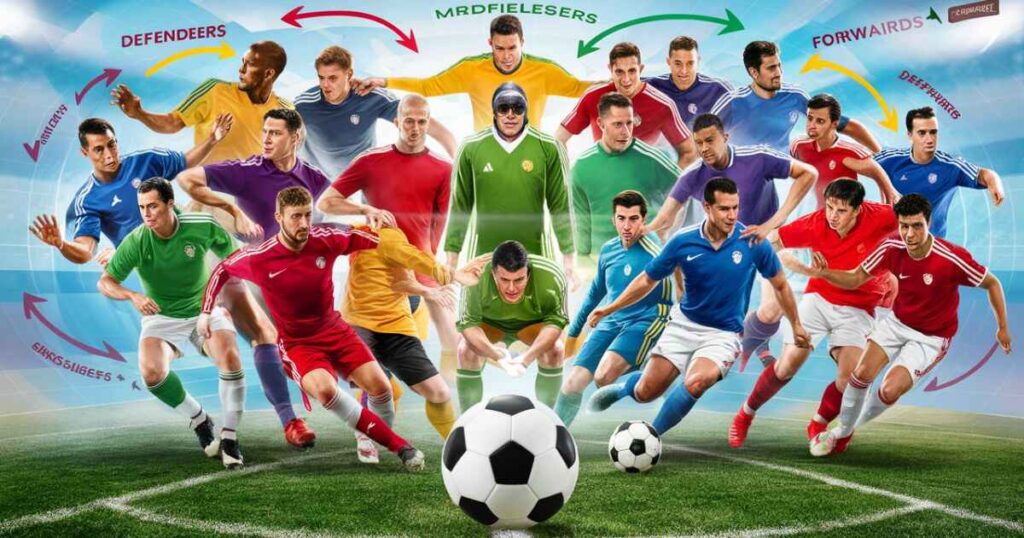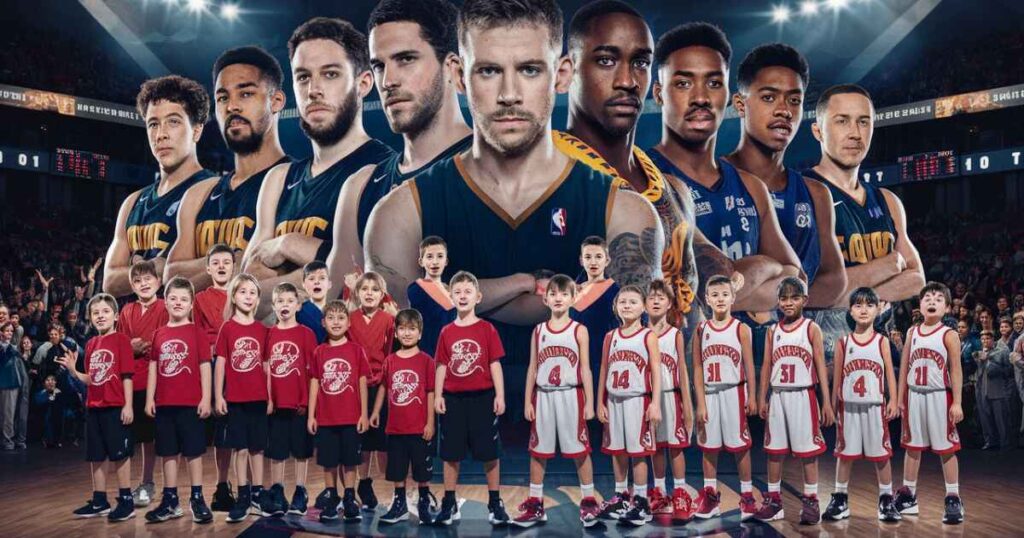Players are the people who participate in a soccer match. They are essential to the game. Each player has a specific role on the field. Players work together as a team to score goals and win. Their skills and teamwork are vital for success.
Soccer captivates millions of fans around the world with its fast-paced action. The game’s rules and player composition are fundamental to its structure. Understanding these elements enhances appreciation for the sport. They form the backbone of every match played.
A standard soccer team fields 11 players during a match. This includes one goalkeeper and ten outfield players. The Laws of the Game, set by FIFA, outline these rules. These laws also cover player substitutions and other aspects of the game. They ensure fair play and consistency across all levels of soccer.
Understanding the Basic Team Composition in Soccer

When it comes to soccer match regulations, the standard setup is pretty straightforward. On the soccer pitch, you’ll find 11 players per team giving it their all. That’s right, 22 players in total, battling it out on the lush green field. But here’s where it gets interesting. only 10 of these players are outfield players, free to roam the pitch.
Now, you might be thinking, “Just 11 players? That’s not a lot!” But hold your horses! While 11 players take to the field, a full match-day squad is much larger. In fact, teams can have anywhere from 18 to 25 players ready to go. This larger squad size allows for soccer substitutions, with teams typically allowed to make five changes during a game.
Read More: The Top Fantasy Football Team Names for 2024
Understanding the Different Soccer Positions

Goalkeeper
The goalkeeper, often called the ‘keeper’ or ‘goalie’, is the team’s last line of defense. This player’s goalkeeper role is unique and crucial. They’re the only ones allowed to handle the ball within their own penalty area. But don’t be fooled – modern goalkeepers need to be more than just good with their hands.
Defenders
Next up, we have the defenders. These are the tough cookies of the team, the players who make it their mission to stop the opposition from scoring. In most soccer formations, you’ll find two types of defenders: center-backs and full-backs. Center-backs are the heart of the defense, often tall and strong players who excel at heading the ball and making crucial tackles.
Midfielders
Midfielders are the engine room of the team. They’re involved in both attack and defense, making them some of the most versatile players on the pitch. There are several types of midfielders, each with their own specific soccer player roles:
- Defensive Midfielders: These players sit just in front of the defense, breaking up opposition attacks and starting their team’s moves.
- Central Midfielders: The all-rounders who contribute to both attack and defense.
- Attacking Midfielders: Creative players who focus on setting up goals for the forwards.
- Wide Midfielders: Players who operate on the flanks, providing width to the team’s play.
- Box-to-Box Midfielders: Energetic players who cover large areas of the pitch, contributing in all phases of play.
Forwards
Last but certainly not least, we have the forwards. These are the glory boys (and girls) of soccer, the ones who put the ball in the back of the net. Forwards come in different flavors too. You’ve got your classic center forwards or strikers, whose main job is to score goals.
Size Variation Between Professional And Youth Teams

Youth U6-U8
For the littlest soccer stars, aged 6 to 8, the game looks a bit different. At this level, it’s all about fun and basic skill development. Teams usually have 4 to 6 players on the field at a time. The soccer pitch dimensions are much smaller too, typically about a quarter of a full-sized field.
Youth U9-U10
As players grow, so does the game. For 9 and 10-year-olds, teams typically play 7v7. The field is larger than the U6-U8 setup but still smaller than a full-sized pitch. This format introduces more tactical elements while still ensuring players get plenty of involvement in the game.
Youth U11-U12
The 11-12 age group takes another step up, usually playing 9v9. This format bridges the gap between the smaller-sided games of younger years and the full 11v11 game. The larger team size introduces more complex tactics and positional play, preparing players for the full game they’ll play in their teens and beyond.
Read More: Unlock Wealth with Money6x Real Estate: Top Investment Tips for 2024
Youth U13 to older
From age 13 onwards, youth soccer mirrors the adult game with 11v11 matches on full-sized fields. This is where young players really start to specialize in specific positions and learn the tactical nuances of the game. It’s exciting to watch these young players develop into well-rounded soccer stars!
Frequently Asked Questions
How do injured players and a yellow or red card affect a team?
Injuries can leave a team shorthanded if all subs are used. Yellow cards warn players, while red cards result in ejection, reducing the team’s on-field numbers.
How many players are on a soccer team during major competitions like the World Cup?
World Cup squads typically include 23 players. This expanded roster provides teams with more options and backup throughout the tournament.
What happens if a team has fewer than seven players eligible to play?
A team must forfeit if they have fewer than seven eligible players. Seven is the minimum required to continue a match.
What are the different football associations in charge of international competitions and regions?
FIFA oversees global soccer, while six continental confederations (AFC, CAF, CONCACAF, CONMEBOL, OFC, UEFA) manage regional competitions and development.
What is the best soccer training program?
The ideal program varies by individual needs but should cover fitness, skills, tactics, and mental prep. Popular options include Coerver Coaching and US Soccer curriculum.
How can I learn more about the game?
Immerse yourself by watching matches, playing, reading about soccer, and trying soccer video games. Consistent engagement deepens understanding of the sport.
Conclusion
Soccer is an exciting game with many moving parts. We’ve learned about the number of players on a team, different positions, and how the rules change for younger players. Whether you’re watching pro matches or playing with friends, knowing these basics makes the game more fun. Soccer is more than just kicking a ball. It’s about teamwork, strategy, and passion. So next time you watch or play, think about what you’ve learned. Who knows? You might see the beautiful game in a whole new light.

